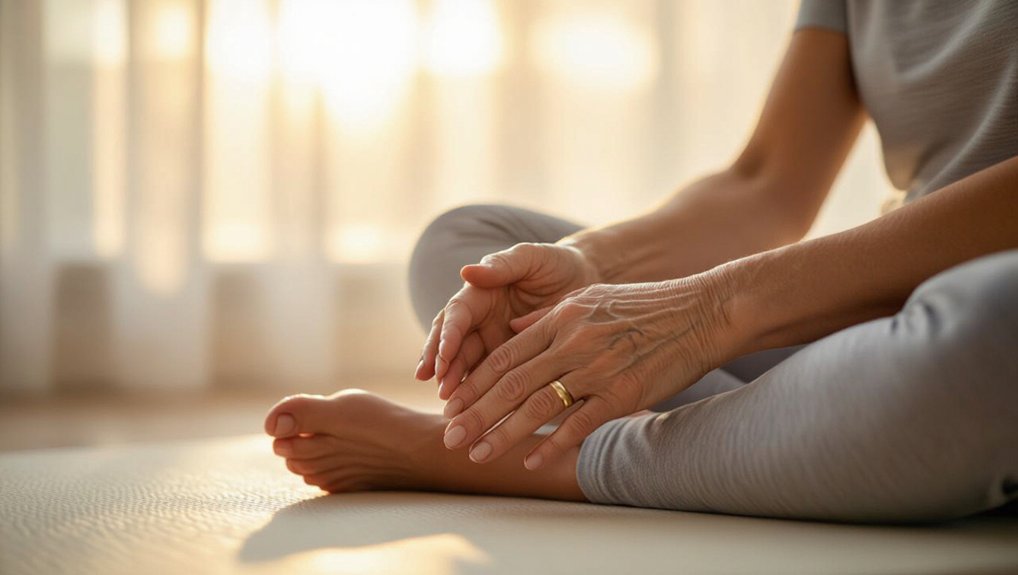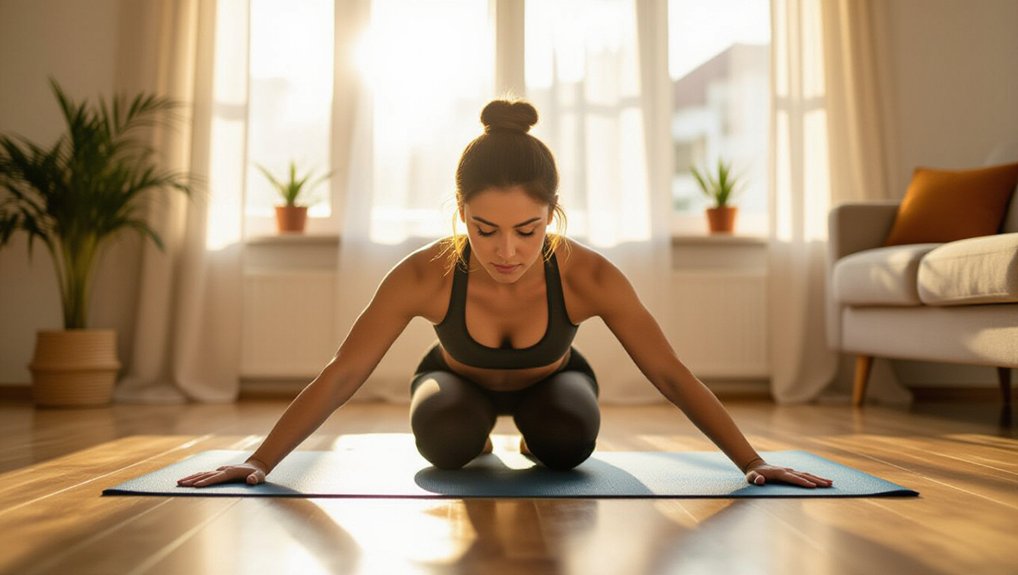You’ve probably experienced that familiar morning stiffness – joints that feel locked in place after hours of sleep, muscles that resist your first movements of the day. While this discomfort affects millions, you don’t have to accept it as an inevitable part of your routine. A targeted mobility sequence can transform those sluggish mornings into energized starts, but the key lies in understanding exactly which movements unlock your body’s potential.
Understanding Morning Joint Stiffness and Its Causes
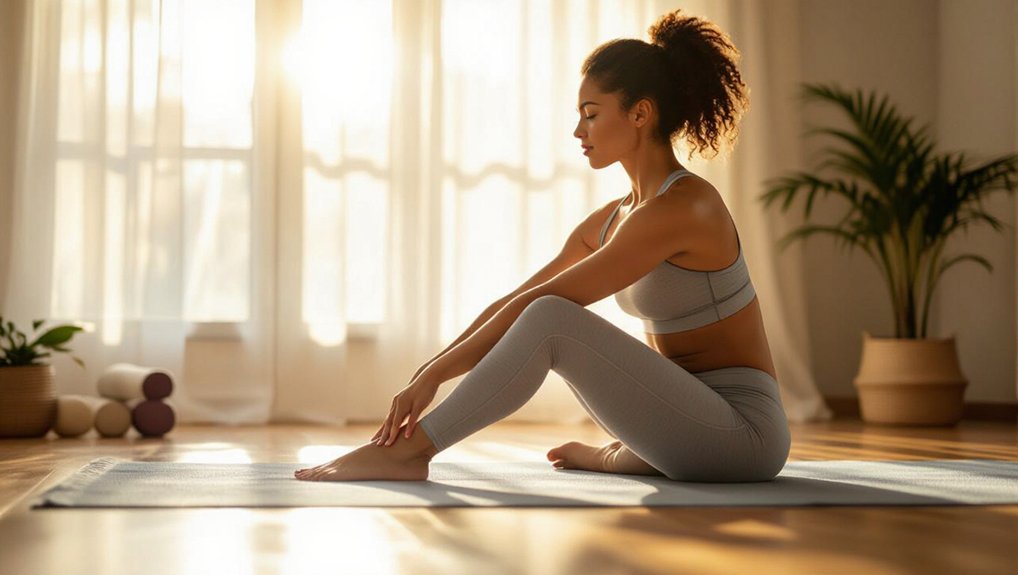
When you wake up feeling like your joints have been frozen overnight, you’re experiencing a common phenomenon that affects millions of people daily. This morning stiffness occurs because your synovial fluid—the lubricant inside your joints—thickens during periods of inactivity. Your body temperature also drops slightly while you sleep, further contributing to this gel-like consistency.
Several factors worsen morning joint stiffness. Age naturally reduces synovial fluid production, making your joints less flexible.
Inflammatory conditions like arthritis create additional swelling and pain. Poor sleep positions can compress joints for hours, restricting blood flow. Dehydration from not drinking water overnight affects tissue elasticity.
Weather changes, particularly cold and humid conditions, can intensify stiffness. Understanding these causes helps you address the root problems rather than just managing symptoms.
Essential Warm-Up Movements to Prepare Your Body

Before you attempt any stretching or exercise, you’ll need to gently coax your stiff joints back to life with targeted warm-up movements.
Start with slow shoulder rolls, moving backward and forward five times each direction. Follow with gentle neck rotations, turning your head slowly left and right.
Next, perform arm circles, beginning small and gradually increasing the diameter.
Wake up your spine with seated or standing torso twists, keeping your hips facing forward. Activate your hips by marching in place, lifting your knees as high as comfortable.
Finish with ankle circles and gentle wrist rotations. Each movement should feel smooth and controlled—never force through pain.
These preparatory movements increase blood flow and synovial fluid production, making subsequent stretches more effective and safer.
Gentle Spinal Mobility Exercises for Back and Neck Relief
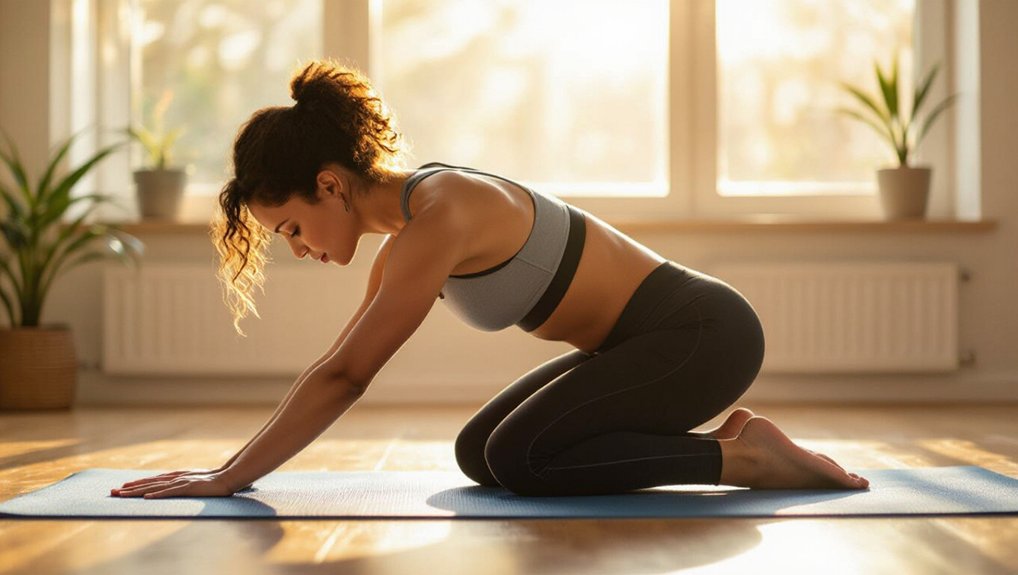
After you’ve warmed up your joints, your spine craves movement to release overnight tension and restore natural curves.
Start with gentle neck rolls, moving slowly in both directions to ease cervical stiffness. Follow with shoulder blade squeezes, pulling them together for five seconds before releasing.
Progress to cat-cow stretches on hands and knees, arching and rounding your back through its full range. This mobilizes your entire spine while activating core muscles.
Add seated spinal twists, rotating gently left and right while keeping your hips forward.
Finish with standing back extensions, placing hands on your lower back and gently arching backward. Hold each position for 15-30 seconds, breathing deeply.
These movements counteract forward head posture and compressed spinal segments from sleep.
Hip and Lower Body Stretches for Improved Flexibility
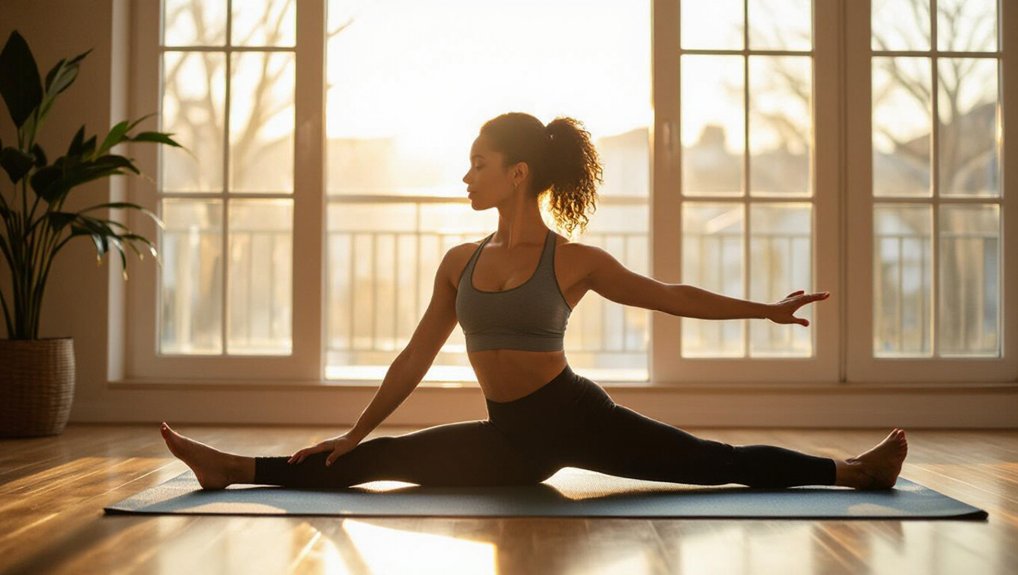
Your hips and lower body carry the weight of nighttime stiffness, often locking into tight positions that limit your morning movement.
Start with gentle hip circles while standing, rotating clockwise then counterclockwise to release tension. Move into a standing forward fold, letting gravity stretch your hamstrings and lower back naturally.
Perform walking lunges to open your hip flexors and activate your glutes. Hold each lunge for fifteen seconds before stepping forward.
Follow with figure-four stretches against a wall, placing one ankle over the opposite knee while gently leaning forward.
Finish with calf raises and ankle circles to improve circulation throughout your lower extremities.
These movements prepare your legs for daily activities while reducing joint compression from sleep.
Upper Body and Shoulder Mobilization Techniques

The upper body bears considerable tension from sleep positioning, often creating knots and restrictions that affect your entire day’s posture.
Start with gentle neck rolls, moving slowly in each direction to release cervical tension. Perform shoulder blade squeezes by pulling your shoulders back and down, holding for five seconds.
Add arm circles, beginning small and gradually increasing the range of motion.
Try doorway chest stretches by placing your forearm against the frame and stepping forward gently. Include cross-body shoulder stretches, pulling each arm across your chest while supporting it with the opposite hand.
Wall slides help activate your shoulder muscles—stand against a wall and slide your arms up and down.
These movements counteract overnight stiffness and prepare your upper body for daily activities.
Creating Your Personalized Daily Routine for Long-Term Success

While individual needs vary significantly, establishing a consistent morning mobility routine requires careful attention to your body’s unique patterns and limitations.
Start by identifying your stiffest areas each morning and prioritize those regions first. Begin with five-minute routines and gradually increase duration as your body adapts.
Schedule your routine at the same time daily to build lasting habits. Track your progress using a simple journal, noting which movements feel easier over time.
Modify exercises based on daily stiffness levels—some mornings you’ll need gentler approaches.
Listen to your body’s feedback and adjust accordingly. If certain movements cause pain, replace them with alternatives.
Consider seasonal changes that might affect joint stiffness and adapt your routine seasonally for optimal results.
Conclusion
You’ve learned the essential movements to combat morning joint stiffness on July 21st and beyond. Start slow, listen to your body, and don’t push through pain. Consistency matters more than intensity—just five to ten minutes daily can transform how you feel. Make these gentle movements part of your morning ritual, and you’ll notice improved flexibility, reduced stiffness, and better joint health throughout your day.
